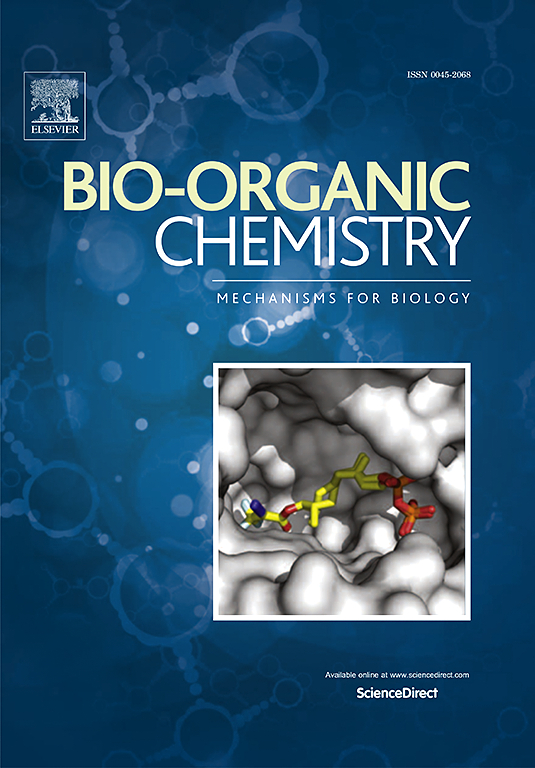喹诺沙霉素核苷类抗生素的生物合成与tunicamycin不同,有额外的糖加工基因
IF 4.5
2区 医学
Q1 BIOCHEMISTRY & MOLECULAR BIOLOGY
引用次数: 0
摘要
核苷类抗生素衣霉素和喹诺沙霉素是密切相关的微生物天然产物,具有显著的抗菌和抗真菌性能。在本研究中,我们鉴定并阐明了一种新的喹诺沃samycin类似物quinovosamycin Q4(4)的结构,它对新型隐球菌(0.03 μg/mL)、白色念珠菌(0.5 μg/mL)和枯草芽孢杆菌(0.125 μg/mL)具有较强的活性。通过对产喹诺沃霉素链霉菌PR-3G测序基因组的生物信息学分析,发现了一个生物合成基因簇(BGC),该基因簇编码了产喹诺沃霉素所需的所有酶,以及几个可能负责合成和结合喹诺沃霉素所需的替代n -乙酰基喹诺沃霉素糖的新上游基因。上游基因在喹诺菌素生物合成中的作用通过插入诱变得到证实。本文章由计算机程序翻译,如有差异,请以英文原文为准。

Biosynthesis of the quinovosamycin nucleoside antibiotics diverges from that of tunicamycins by additional sugar processing genes
Nucleoside antibiotics tunicamycins and quinovosamycins are closely related microbial natural products with significant antibacterial and antifungal properties. In this study, we identify and elucidate the structure of a new quinovosamycin analogue, quinovosamycin Q4 (4), which displays potent activity against Cryptococcus neoformans (0.03 μg/mL), Candida albicans (0.5 μg/mL), and Bacillus subtilis (0.125 μg/mL). Bioinformatics analysis of the sequenced genome of the quinovosamycin producing Streptomyces strain PR-3G identified a biosynthetic gene cluster (BGC), encoding all of the enzymes needed for tunicamycin synthesis, as well as several new upstream genes likely responsible for synthesis and incorporation of the alternative N-acetylquinovosamine sugar needed for quinovosamycin production. The role of the upstream genes in quinovosamycins biosynthesis was confirmed by insertional mutagenesis.
求助全文
通过发布文献求助,成功后即可免费获取论文全文。
去求助
来源期刊

Bioorganic Chemistry
生物-生化与分子生物学
CiteScore
9.70
自引率
3.90%
发文量
679
审稿时长
31 days
期刊介绍:
Bioorganic Chemistry publishes research that addresses biological questions at the molecular level, using organic chemistry and principles of physical organic chemistry. The scope of the journal covers a range of topics at the organic chemistry-biology interface, including: enzyme catalysis, biotransformation and enzyme inhibition; nucleic acids chemistry; medicinal chemistry; natural product chemistry, natural product synthesis and natural product biosynthesis; antimicrobial agents; lipid and peptide chemistry; biophysical chemistry; biological probes; bio-orthogonal chemistry and biomimetic chemistry.
For manuscripts dealing with synthetic bioactive compounds, the Journal requires that the molecular target of the compounds described must be known, and must be demonstrated experimentally in the manuscript. For studies involving natural products, if the molecular target is unknown, some data beyond simple cell-based toxicity studies to provide insight into the mechanism of action is required. Studies supported by molecular docking are welcome, but must be supported by experimental data. The Journal does not consider manuscripts that are purely theoretical or computational in nature.
The Journal publishes regular articles, short communications and reviews. Reviews are normally invited by Editors or Editorial Board members. Authors of unsolicited reviews should first contact an Editor or Editorial Board member to determine whether the proposed article is within the scope of the Journal.
 求助内容:
求助内容: 应助结果提醒方式:
应助结果提醒方式:


